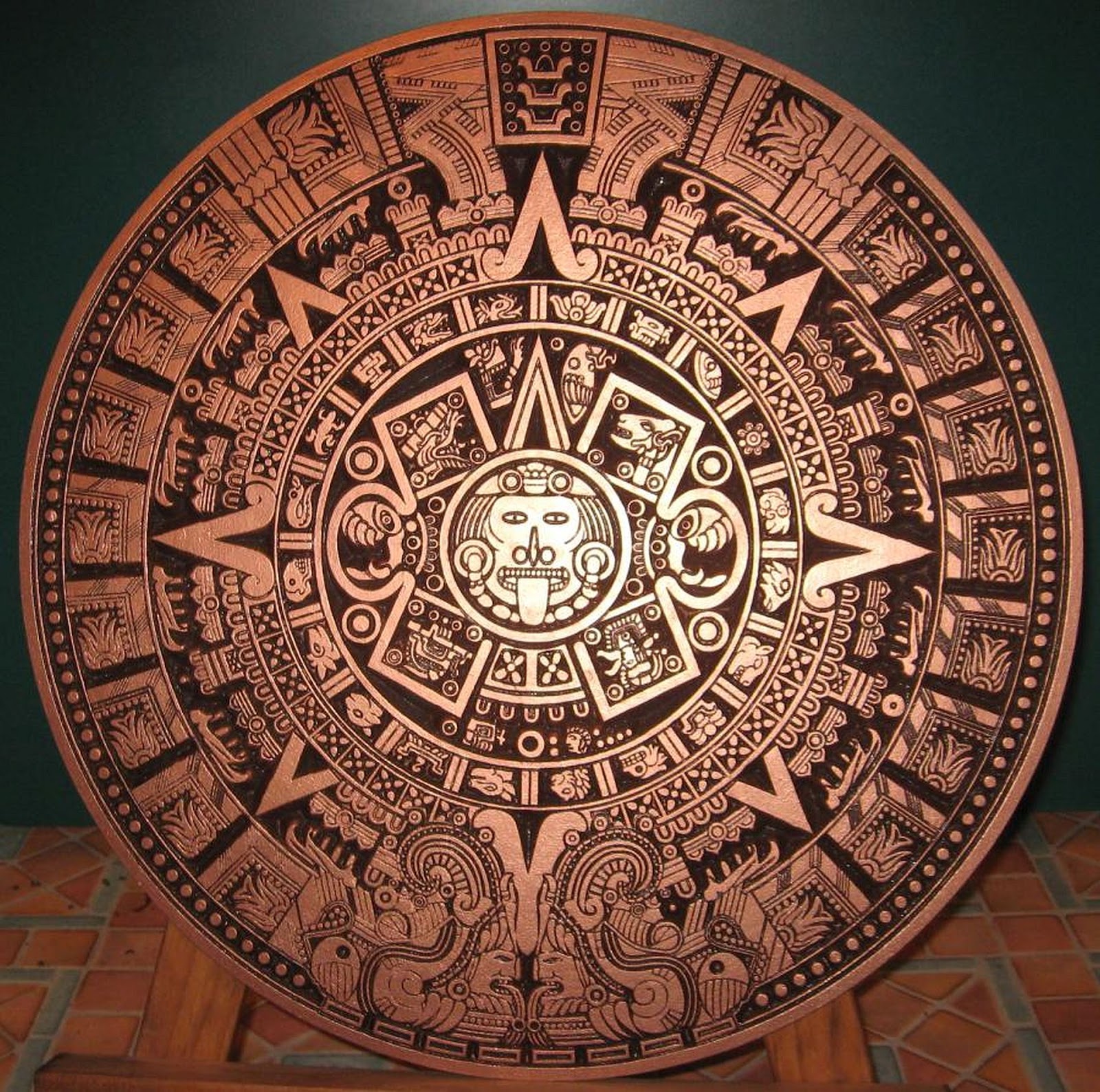When Was The Aztec Calendar Stone Made WEB It was the Aztec calendar stone or more properly the Cuauhxicalli Eagle Bowl For a while it remained on display in the Western Tower of the Metropolitan Cathedral and then in 1885 it was moved to the Museo Nacional de Antropolog 237 a in Mexico where it
WEB Apr 25 2016 nbsp 0183 32 The Aztecs used a sacred calendar known as the tonalpohualli or counting of the days This went back to great antiquity in Mesoamerica perhaps to the Olmec civilization of the 1st millennium BCE It formed a 260 day cycle in all probability originally based on astronomical observations WEB The Aztec Sun Stone History Size and Material The Aztec Sun Stone was carved in 1479 and was dedicated to the sun god After the Spanish conquest of the Aztec Empire in 1521 the stone was buried in the Zocalo at the main square of the present day Mexico City
When Was The Aztec Calendar Stone Made
 When Was The Aztec Calendar Stone Made
When Was The Aztec Calendar Stone Made
http://upload.wikimedia.org/wikipedia/commons/b/b5/Aztec_Sun_Stone_Replica_cropped.jpg
WEB The Aztec solar year lasted 365 days There were 18 months of 20 days as well as 5 intercalary days They also used a 13 month 260 day ritual calendar Every 52 years or 18980 days
Templates are pre-designed files or files that can be utilized for various purposes. They can save time and effort by providing a ready-made format and design for creating different kinds of content. Templates can be used for personal or expert jobs, such as resumes, invites, flyers, newsletters, reports, discussions, and more.
When Was The Aztec Calendar Stone Made

Here s How You Should Read The Aztec Sun Stone

Aztec Calendar Chronology Britannica

Aztec Calendar Stone Of The Sun Stockfoto Getty Images

Aztec Calendar Gods Off 60

Dec 17 1790 Accurate Calendar Requires Sacrifice You Dig WIRED

Aztec People And Montezuma Mexico Go Gringo

https://www.britannica.com/topic/Aztec-calendar
WEB Aztec calendar dating system based on the Mayan calendar and used in the Valley of Mexico before the destruction of the Aztec empire Like the Mayan calendar the Aztec calendar consisted of a ritual cycle of 260 days and a 365 day civil cycle The ritual cycle or tonalpohualli contained two

https://en.wikipedia.org/wiki/Aztec_calendar
WEB The Aztec sun stone also called the calendar stone is on display at the National Museum of Anthropology in Mexico City The calendar consists of a 365 day calendar cycle called xiuhp hualli year count and a 260 day ritual cycle called t nalp hualli day count

https://smarthistory.org/the-sun-stone-the-calendar-stone-aztec
WEB Dec 6 2023 nbsp 0183 32 The Sun Stone or The Calendar Stone Aztec reign of Moctezuma II 1502 20 discovered in 1790 at the southeastern edge of the Plaza Mayor Zocalo in Mexico City stone unfinished 358 cm diameter x

https://en.wikipedia.org/wiki/Aztec_sun_stone
WEB Roberto Sieck Flandes in 1939 published a monumental study entitled How Was the Stone Known as the Aztec Calendar Painted which gave evidence that the stone was indeed pigmented with bright blue red green and yellow colors just as many other Aztec sculptures have been found to have been as well

https://www.worldhistory.org/Sun_Stone
WEB Sep 4 2013 nbsp 0183 32 The Aztec Sun Stone or Calendar Stone depicts the five consecutive worlds of the sun from Aztec mythology The stone is not therefore in any sense a functioning calendar but rather it is an elaborately carved solar disk which for the Aztecs and other Mesoamerican cultures represented rulership
WEB Jun 14 2016 nbsp 0183 32 The Sun Stone or The Calendar Stone Aztec reign of Moctezuma II 1502 20 discovered in 1790 at the southeastern edge of the Plaza Mayor Zocalo in Mexico City stone WEB The Aztec Calendar Stone or Piedra del Sol was buried a few decades after the conquest beneath what is now Mexico City s main plaza or Z 243 calo It was rediscovered in 1790 and mounted on one of the towers of the Catedral metropolitan where it remained until 1885
WEB Apr 17 2024 nbsp 0183 32 The Sun Stone was originally sculpted in the Aztec capital of Tenochtitlan and was rediscovered in 1790 at the edge of the Z 243 calo or Plaza Mayor in Mexico City This massive rock reveals the Aztecs understanding of the universe or their cosmic beliefs